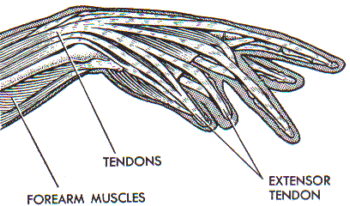 SKC Films Library |
| SKC Films Library >> Science >> Human Anatomy |
| The Human Hand Human hands are used to touch and feel things. They contain at least four types of nerve endings that make the fingers and thumbs highly sensitive. For example, blind persons rely entirely on their sense of touch when they run their fingers over the raised letters of Braille books to read. The human hand also helps people communicate with each other. Hearing impaired persons use sign language to "talk" to each other, and many well-known hand gestures clearly communicate very specific messages. Parts of the Hand Human hands are specially constructed for taking hold of objects. They have opposable thumbs, or thumbs that can be moved against the fingers, making it possible to grasp things in the hand and make many delicate motions. The human hand consists of the carpus, or wrist; the metacarpus, or palm; and the digits, the four fingers and the thumb. There are 27 bones in the hand--8 carpals, 5 metacarpals, and 14 phalanges (3 in each of the fingers plus 2 in the thumb). The hand is moved by 35 powerful muscles, 15 of which are actually located in the forearm. This arrangement gives great strength to the hand without making the fingers so thick with muscles that they would be difficult to move. Near the wrist the muscles become strong, slender cords called tendons that run along the palm and back of the hand to the joints of the fingers. When the muslces on the palm side of the forearm contract, the fingers close. When the muslces on the back of the forearm contract, the fingers open. The 20 muscles within the hand itself are arranged so that the hand and fingers can make a variety of precise movements.
|
| SKC Films Library
>> Science >> Human Anatomy This page was last updated on 01/19/2018. |
